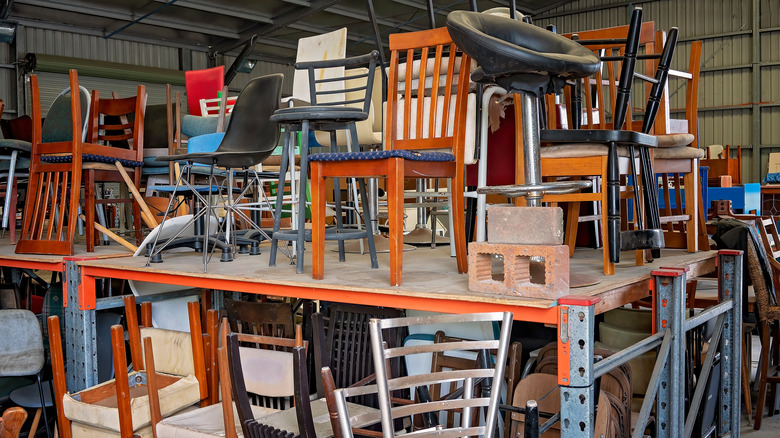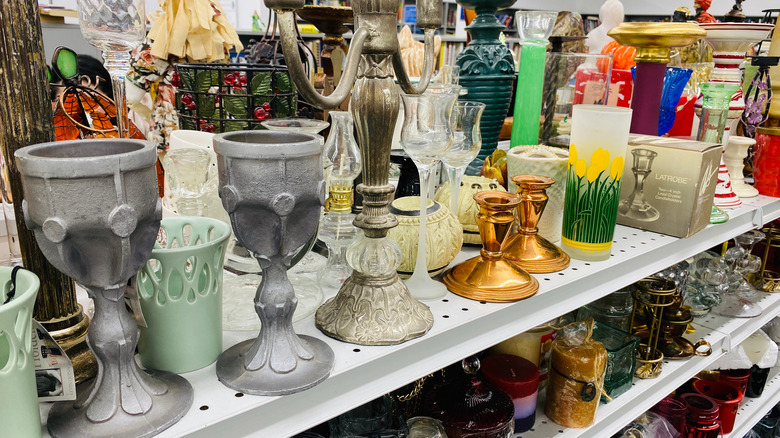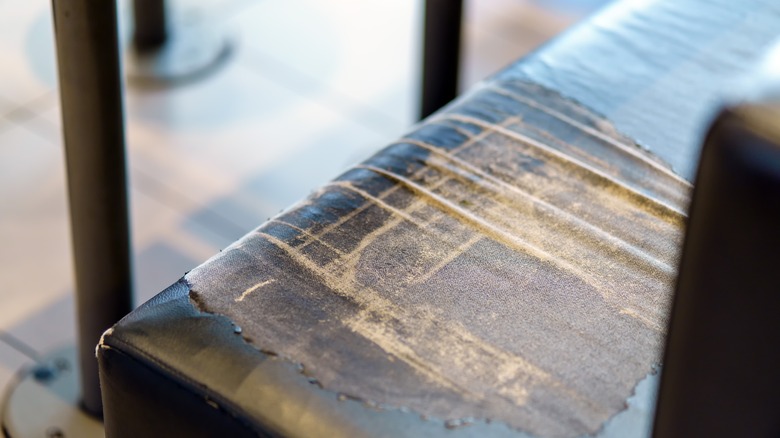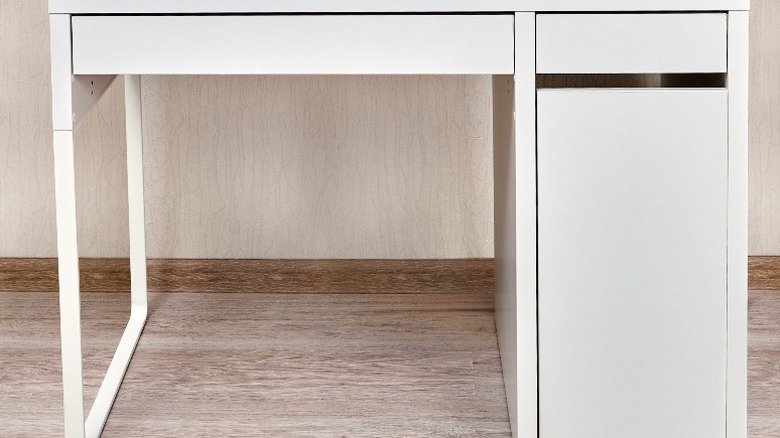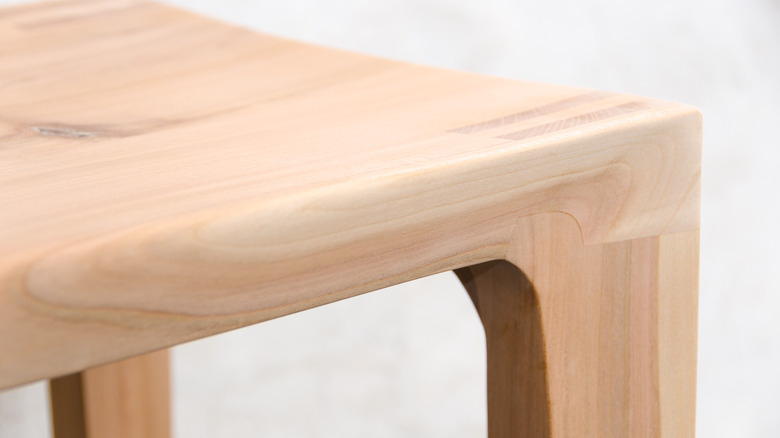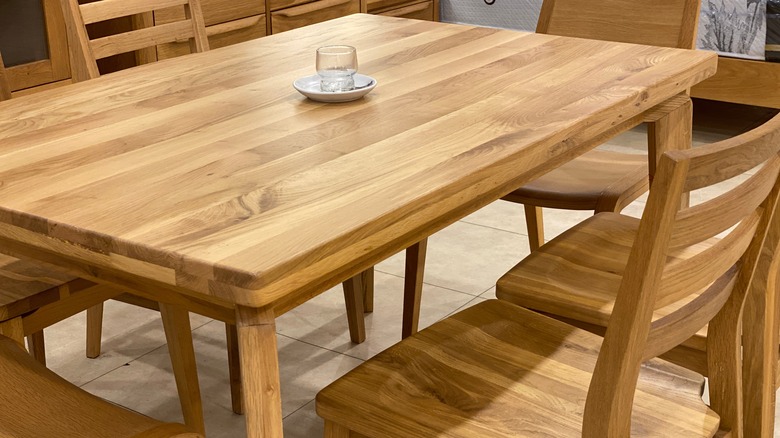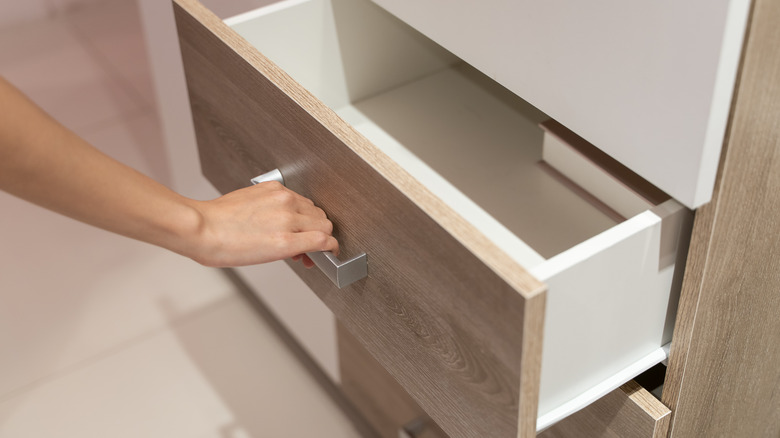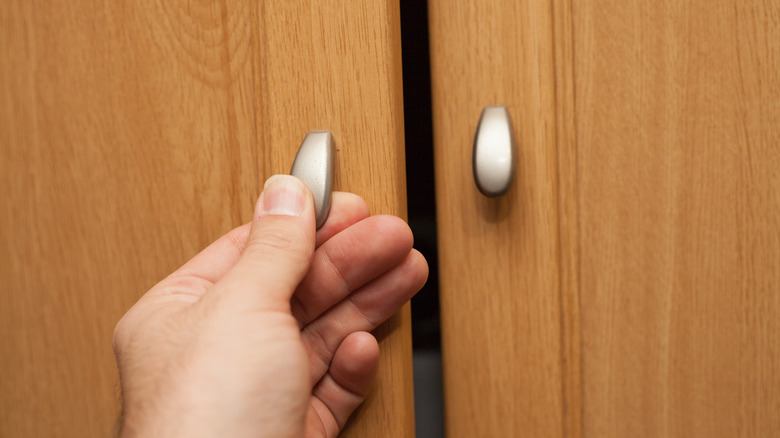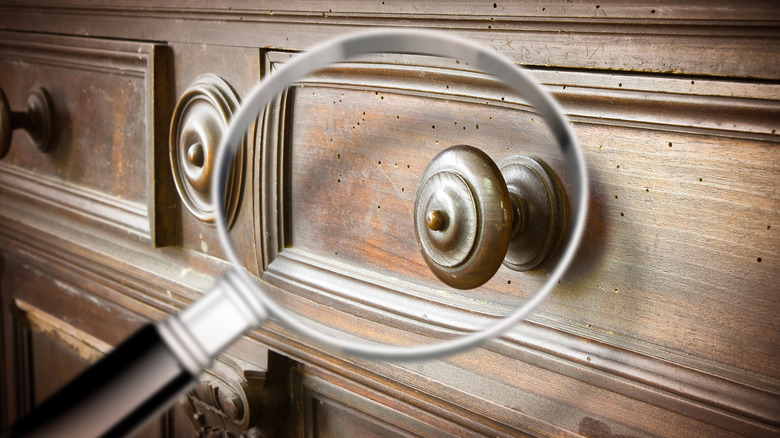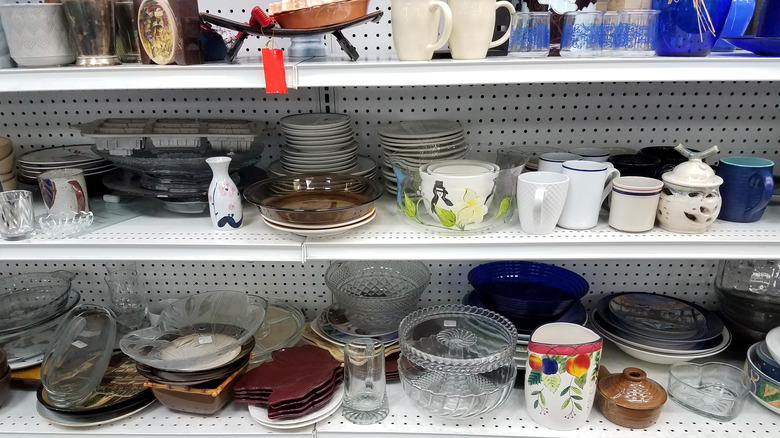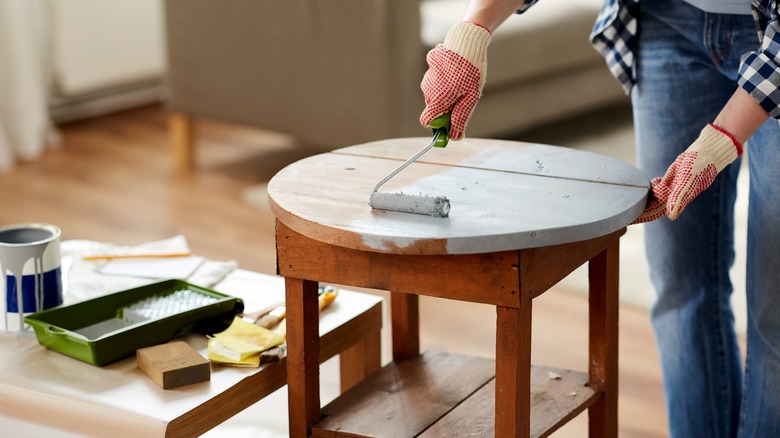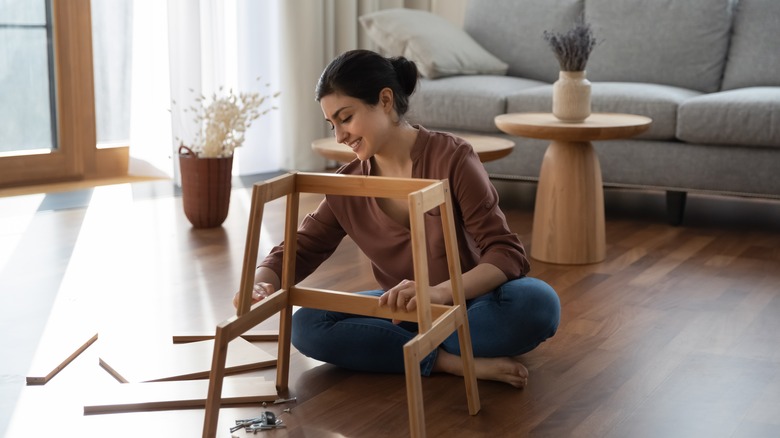15 Savvy Tips For Getting The Best Furniture At Goodwill
One of the most exciting parts of moving into a new home is getting to furnish it to your liking. However, the process tends to be very costly, and designing your dream home may require a significant chunk of change. Even replacing one piece of furniture can run up a pretty steep bill. Luckily, your local Goodwill likely has you covered with a store full of great, cheap furniture ripe for the picking.
If you're a thrifting aficionado, then the treasures hidden in your Goodwill's furniture aisle are likely no surprise to you. If you haven't ventured into the realm of thrifting yet, though, don't feel intimidated. Thrift stores often carry an association with being low quality or dingy, that's usually because of the minimal approach to displaying merchandise, notes Echo Media. In fact, if you know what to look for and where to look for it, you can find incredibly high-quality items for a fraction of the cost as they would be new — furniture included.
1. Know what you're looking for
Even the most organized thrift stores can get overwhelming very quickly. This is why A Butterfly House recommends only identifying what it is you need — don't let a fancy bar cart or the rows of armchairs distract you if all you need is a dining table.
2. Know where to look
The layout of your local Goodwill may be hard to figure out. For this reason, 2nd Ave. Value Stores recommends going on a weekday when it's less busy. Take a loop around the store to get a feel for where things are and don't be afraid to look in unconventional aisles for small furniture items.
3. Explore other Goodwills
One of the simultaneously best and worst parts about thrifting is that no two Goodwills are alike. If you're dissatisfied with what you find at your first Goodwill, don't give up hope. Regroup, and explore other surrounding stores. Curbed recommends looking for more remote Goodwills, which may be less picked through.
4. Don't set your expectations too high
Finding a high-quality piece of furniture in perfect condition is very rare at Goodwill. While you can find quality, sturdy pieces, set realistic expectations for your thrifting trip — you may have to settle for a dresser with a wonky handle, or a chair with torn upholstery (via Life Storage).
5. Avoid low-quality materials
You shouldn't waste time inspecting or considering a low-quality piece of furniture. For wooden or wood veneer furniture, this includes fiberboard, particleboard, and plywood, per Gibson Brothers Furniture. For upholstered furniture, check for density and fabric comfort.
6. Avoid poor construction
Gibson Brothers Furniture also recommends keeping an eye out for poor construction. Consider why the item's at a thrift store in the first place — a table made with quality wood is useless if it falls apart after one use. If you can see visible nails, staples, or glue, or the furniture is wobbly to the touch, skip it.
7. Look out for high-quality materials
On the other hand, knowing what quality furniture to look for makes your Goodwill trip that much easier. Inclusive Design Group says to look for solid hardwood pieces with screwed, dowelled, or mortise and tenon joints. It should also be sturdy and not wobble. Look for thick, densely padded foam on upholstered furniture.
8. Test drawers and doors
Another quality and functionality check that Inclusive Design Group recommends performing is testing any doors, handles, and drawers. A dresser or desk may look gorgeous, but there's no point in hauling it home if you can't use it.
9. Look inside
While you're checking the functionality of any drawers or cabinets, take a second to look inside. Duct Tape and Denim recommends going as far as giving the inside of any furniture a quick sniff (especially when it comes to cigarette smoke), but at the very least look for mold, mildew, or other significant damage.
10. Look for scratches and dents
Along the same vein, Duct Tape and Denim emphasizes the importance of looking for signs of damage — scratches, dents, bowing, breakage, staining, etc. In some cases, this can be buffed out or corrected, or simply may not be a big deal for you. However, it could also indicate a poor-quality piece of furniture.
11. Get creative
If you're not finding what you're looking for, consider getting a little creative. Rocket Homes gives the example of turning a ladder into a shelf, but the options are endless — especially for decorative items. Use a vase as a utensil holder or vice versa, or a dining table as a desk.
12. Consider a flip
While excessive damage is a red flag, don't write off a perfectly good piece of furniture because of one ding, or because it isn't the ideal wood finish or color. Instead, Life Storage says to perform some simple furniture flipping, like painting a dresser, replacing wonky drawer handles, etc.
13. Don't get carried away
On the other hand, don't dive headfirst into a major, tedious transformation if you aren't a well-versed flipper, warns Duct Tape and Denim. Things like reupholstery, sanding carved wood, or refinishing wood are pretty involved and advanced tasks, so start small with a simple coat of paint.
14. Look for discounts
On top of Goodwill's already low prices, it also offers discounts. This will range from location to location, with some places offering specific discounted days, and others, like Goodwill Ohio, having colors of the week, where clothes tagged with certain colors are 50% off. Check with your local Goodwill for even more furniture savings.
15. Check Goodwill oulets
If you're not having luck at your local Goodwills and are feeling a little brave, consider checking out a Goodwill Outlet, also known as the bins. As Dina's Days explains, outlets are full of items that couldn't sell at the main store, and you're charged by total weight. They can be ruthless, though, so come prepared.

